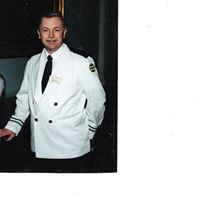Gary L Sharp
age ~69
from Magnolia, AR
- Also known as:
-
- Gary Lynn Sharp
- Gary Etal Sharp
- Leslie Sharp
- Allison Sharp
- Katherine Sharp
- Phone and address:
-
238 Palmetto Dr, Magnolia, AR 71753
(870)2344102
Gary Sharp Phones & Addresses
- 238 Palmetto Dr, Magnolia, AR 71753 • (870)2344102
- Marshalltown, IA
- Las Vegas, NV
- 238 Palmetto Dr #84, Magnolia, AR 71753 • (870)2344102
Work
-
Company:Albemarle corporation
-
Address:1550 Highway 371 S, Magnolia, AR 71753
-
Phones:(870)2356000
-
Position:Process engineer
-
Industries:Industrial Inorganic Chemicals
Education
-
Degree:Bachelor's degree or higher
Specialities
Litigation • Appeals • Intellectual Property • Construction • Product Liability • Toxic Tort / Mass Tort
Lawyers & Attorneys

Gary Sharp - Lawyer
view sourceOffice:
Foley & Mansfield
Specialties:
Litigation
Appeals
Intellectual Property
Construction
Product Liability
Toxic Tort / Mass Tort
Appeals
Intellectual Property
Construction
Product Liability
Toxic Tort / Mass Tort
ISLN:
903814711
Admitted:
1984
University:
Thomas M. Cooley Law School, 2005; University of Arizona, B.A., 1981
Law School:
Pepperdine University, J.D., 1984
Isbn (Books And Publications)




Us Patents
-
Separation Process
view source -
US Patent:6964728, Nov 15, 2005
-
Filed:May 16, 2002
-
Appl. No.:10/147621
-
Inventors:Bonnie G. McKinnie - Magnolia AR, US
Robert E. Williams - Magnolia AR, US
Gary L. Sharp - Magnolia AR, US
Alireza M. Dadgar - Magnolia AR, US -
International Classification:B01D003/34
C07C027/28
C07C029/80 -
US Classification:203 6, 203 19, 203 38, 203 41, 203 47, 203 57, 203100, 203DIG 13, 568749, 568890, 568913
-
Abstract:Bisphenol-A-bis(neopentylglycolphosphate) products of enhanced properties and processes for preparing them are described. One of the processes includes (a) mixing and reacting neopentyl glycol and bisphenol-A-bis(dichlorophosphate) in an inert polar organic solvent which (1) if mixed by itself with an equal volume of water at 25 C. , will form a separate phase, (2) the solvent by itself will dissolve at least about 10 wt % of bisphenol-A-bis(neopentylglycolphosphate) at a temperature in the range of 25 to 50 C. , and optionally but preferably (3) the solvent by itself can be completely vaporized at a temperature below about 180 C. ; (b) washing bisphenol-A-bis(neopentylglycolphosphate) product formed in a) while dissolved in inert organic solvent having such characteristics at least once with an aqueous alkaline washing solution; and (c) optionally but preferably, recovering bisphenol-A-bis(neopentylglycolphosphate) product from organic solvent having such characteristics. The reaction of (a) can be conducted in an inert non-polar solvent if that solvent is replaced by an inert polar organic solvent satisfying (1) and (2), and preferably (3). A solvent satisfying (1), (2), and (3) is used when (c) is conducted by distilling or vaporizing off the solvent to recover the bisphenol-A-bis(neopentylglycolphosphate) product as such.
-
Removal Of Bromine From Gaseous Hydrogen Bromide
view source -
US Patent:20130287675, Oct 31, 2013
-
Filed:Dec 28, 2011
-
Appl. No.:13/997964
-
Inventors:William B. Harrod - Minden LA, US
John M. Harden - Magnolia AR, US
Gary L. Sharp - Magnolia AR, US
Robert E. Williams - Magnolia AR, US -
Assignee:Albemarle Corporation - Baton Rouge LA
-
International Classification:C01B 7/09
-
US Classification:423488
-
Abstract:A new, highly selective way of removing bromine contamination from a gaseous stream comprised of hydrogen bromide and bromine is described. Such process technology involves non-catalyzed free radical (benzylic) bromination of an alkylene-bridged aromatic hydrocarbon and/or certain alkyl-substituted aromatic hydrocarbons and recovering the purified gaseous HBr. Because of the high selectivity of the bromination on the aliphatic bridges or side-chains, virtually no ring bromination occurs, and this enables recovery of the bromine values in the form of HBr. Thus preferably, the bromine is recovered as HBr from the scrubbing liquid by subjecting the scrubbing liquid to thermal or catalytic dehyrobromination. In plant operations, the gaseous HBr purified in the process can then be introduced into a compressor to produce either liquid or gaseous HBr for storage under pressure. Alternatively, the purified gaseous HBr can be fed directly into one or more reactions in which HBr is used as a reactant.
-
Process For High Purity Tetrabromobisphenol-A
view source -
US Patent:52083896, May 4, 1993
-
Filed:Apr 1, 1992
-
Appl. No.:7/861544
-
Inventors:Bonnie G. McKinnie - Magnolia AR
Gary L. Sharp - Magnolia AR -
Assignee:Ethyl Corporation - Richmond VA
-
International Classification:C07C 39367
C07C 3768 -
US Classification:568726
-
Abstract:The quality of a product predominant in tetrabromobisphenol-A is enhanced by contacting the product with a quality enhancing amount of treated water and heat treating the product for a period of time and at a temperature which are sufficient to obtain a TBBPA predominant product having less than about 20 ppm of ionic impurities.
-
Process For High Purity Tetrabromobisphenol-A
view source -
US Patent:52833755, Feb 1, 1994
-
Filed:Dec 15, 1992
-
Appl. No.:7/990414
-
Inventors:Bonnie G. McKinnie - Magnolia AR
Gary L. Sharp - Magnolia AR
Robert E. Williams - Magnolia AR -
Assignee:Ethyl Corporation - Richmond VA
-
International Classification:C07C 3938
C07C 39367 -
US Classification:568726
-
Abstract:This invention relates to a process for preparing a flame retardant product predominant in tetrabromobisphenol-A. The process comprises: (a) dissolving bisphenol-A in a methanol solvent containing up to about 5 weight percent water, wherein the ratio of methanol to bisphenol-A ranges from about 25 to about 43 moles of methanol per mole of bisphenol-A based on the total amount of methanol used and the total amount of bisphenol-A to be brominated; (b) adding to the solution in (a) from about 3. 9 to about 4. 2 moles of bromine per mole of bisphenol-A to be brominated while maintaining a reaction temperature in the range of from about 0. degree. to about 40. degree. C. ; (c) after the bromination is substantially complete, adding water to precipitate the tetrabromobisphenol-A thus formed; and (d) purifying the precipitated tetrabromobisphenol-A so as to obtain a product predominant in tetrabromobisphenol-A containing less than about 20 ppm total ionic impurity.
-
Removal Of Bromine From Gaseous Hydrogen Bromide
view source -
US Patent:20150147265, May 28, 2015
-
Filed:May 24, 2013
-
Appl. No.:14/405201
-
Inventors:- Baton Rouge LA, US
John M. Harden - Zachary LA, US
Rhett P. Heeb - Magnolia AR, US
Steven G. Karseboom - Baton Rouge LA, US
Gary L. Sharp - Magnolia AR, US
Robert E. Williams - Boles AR, US -
International Classification:C01B 7/09
-
US Classification:423488
-
Abstract:Processes of and systems for removing free bromine from gaseous anhydrous HBr contaminated with free bromine are described. In one type of process the gaseous contaminated HBr is fed into countercurrent contact with at least one liquid alkylaromatic hydrocarbon within a packed section of a column while maintaining the packed section under free radical bromination conditions so that one or more than one liquid a-bromoalkylaromatic compound is produced along with one mole of gaseous HBr per mole of a-bromoalkylaromatic compound produced. In another type of process the gaseous anhydrous HBr is fed into countercurrent contact through at least two scrubbers so that the gaseous anhydrous HBr is scrubbed substantially free of bromine by passage through these at least two scrubbers, each of which contains a different specified type of scrubbing liquid. In one embodiment the liquid alkylaromatic hydrocarbon comprises 1,2-diphenylethane.
Medicine Doctors

Gary C. Sharp
view sourceSpecialties:
Family Medicine
Work:
Hancock Physicians Network LLCGary C Sharp MD
1471 Jason Rd, Greenfield, IN 46140
(317)4624233 (phone)
1471 Jason Rd, Greenfield, IN 46140
(317)4624233 (phone)
Education:
Medical School
Indiana University School of Medicine
Graduated: 1974
Indiana University School of Medicine
Graduated: 1974
Procedures:
Allergen Immunotherapy
Destruction of Benign/Premalignant Skin Lesions
Electrocardiogram (EKG or ECG)
Hearing Evaluation
Pulmonary Function Tests
Skin Tags Removal
Vaccine Administration
Destruction of Benign/Premalignant Skin Lesions
Electrocardiogram (EKG or ECG)
Hearing Evaluation
Pulmonary Function Tests
Skin Tags Removal
Vaccine Administration
Conditions:
Acne
Acute Bronchitis
Acute Conjunctivitis
Acute Sinusitis
Allergic Rhinitis
Acute Bronchitis
Acute Conjunctivitis
Acute Sinusitis
Allergic Rhinitis
Languages:
English
Description:
Dr. Sharp graduated from the Indiana University School of Medicine in 1974. He works in Greenfield, IN and specializes in Family Medicine. Dr. Sharp is affiliated with Hancock Regional Hospital.

Gary D. Sharp
view sourceSpecialties:
Anesthesiology
Work:
Southern Arizona Anesthesia PCSouthern Arizona Anesthesia Services PC
6200 N Ln Cholla Blvd, Tucson, AZ 85741
(520)7957650 (phone), (520)3251622 (fax)
6200 N Ln Cholla Blvd, Tucson, AZ 85741
(520)7957650 (phone), (520)3251622 (fax)
Education:
Medical School
University of Nevada School of Medicine
Graduated: 1983
University of Nevada School of Medicine
Graduated: 1983
Languages:
English
Spanish
Spanish
Description:
Dr. Sharp graduated from the University of Nevada School of Medicine in 1983. He works in Tucson, AZ and specializes in Anesthesiology.

Gary Charles Sharp
view sourceSpecialties:
Anesthesiology
Family Medicine
Occupational Medicine
Family Medicine
Occupational Medicine
Education:
Indiana University(1974)
Name / Title
Company / Classification
Phones & Addresses
Owner
Communication Technologies
Telephone Communications. Telecommunications Equipment - Disability
Telephone Communications. Telecommunications Equipment - Disability
6923 Maynardville Pike, #291, Knoxville, TN 37918
(865)6928588
(865)6928588
President
GCN Industries LLC
The Gallmann Company North. LLC
Cleaning Systems Press. Chemical. Etc.
The Gallmann Company North. LLC
Cleaning Systems Press. Chemical. Etc.
1780 E. Bert Kouns, #823, Shreveport, LA 71105
(318)7980150
(318)7980150
Process Engineer
Albemarle Corporation
Industrial Inorganic Chemicals
Industrial Inorganic Chemicals
1550 Highway 371 S, Magnolia, AR 71753
ELCHERT SHARP CUSTOM SERVICES, LLC
Director of Operations
Albemarle Corporation
Mfg Industrial Inorganic Chemicals Mfg Chemical Preparations · Mfg Industrial Inorganic Chemicals
Mfg Industrial Inorganic Chemicals Mfg Chemical Preparations · Mfg Industrial Inorganic Chemicals
Us Hwy 79 S, Magnolia, AR 71753
PO Box 729, Magnolia, AR 71754
(870)2356000
PO Box 729, Magnolia, AR 71754
(870)2356000
Principal
Gary L Sharp
Business Services at Non-Commercial Site
Business Services at Non-Commercial Site
238 Palmetto Dr, Magnolia, AR 71753
Googleplus

Gary Sharp
Education:
University of Virginia

Gary Sharp
Work:
Sharp Business Solutions

Gary Sharp

Gary Sharp

Gary Sharp
Tagline:
Librarian, photographer, hiker

Gary Sharp

Gary Sharp

Gary Sharp
Myspace

Gary Sharp Sr.
view source
Gary Sharp Jr.
view source
Gary Charlotte Sharp
view source
Gary W Sharp
view source
Gary W Sharp
view source
Gary Sharp II
view source
Gary Sharp
view source
Gary O. Sharp
view sourceClassmates

Gary Sharp
view sourceSchools:
Cedar Street Elementary School Paw Paw MI 1985-1989
Community:
Jennifer Schug, Cheryl Mcclain, Becky Engstrom, Rachelle Montgomery, Phyllis Grames

Gary Sharp
view sourceSchools:
Chillicothe Township High School Chillicothe IL 1961-1965
Community:
Louanne Ulrich, Joann Connor, Linda Griswold, Jane Kemp

Gary Sharp
view sourceSchools:
Presque Isle High School Presque Isle ME 1973-1977
Community:
Beverly Humphreys, Bruce Walters

Gary Sharp
view sourceSchools:
Forest Hills High School Sidman PA 1998-2002
Community:
Richard Snedden, Dorothy Crum, David Kitchen

Gary Sharp
view sourceSchools:
Morley Stanwood High School Morley MI 1997-2001
Community:
Audra Carpenter, Karin Hilliker, Debbie Arndt

Gary Sharp
view sourceSchools:
Buena Vista Continuation High School Chino CA 1973-1977
Community:
Terry Thompson, Tony Misko, Bob Whitmore, Elaine Maynard, Constance Koch

Gary Sharp
view sourceSchools:
Bryan Station High School Lexington KY 1966-1970
Community:
Mary Wenger
Youtube
Flickr
Plaxo

Gary Sharp
view sourceNew Smyrna Beach, FL

Gary Sharp
view sourceminister of the Gospel

Gary Sharp
view source
Gary Sharp
view sourceSalinas, CaliforniaScientific Director at Center for Climate/Ocean Re...

Gary Sharp
view sourceBoston, MA

Gary Sharp
view sourceHwy 62 RV
Get Report for Gary L Sharp from Magnolia, AR, age ~69














